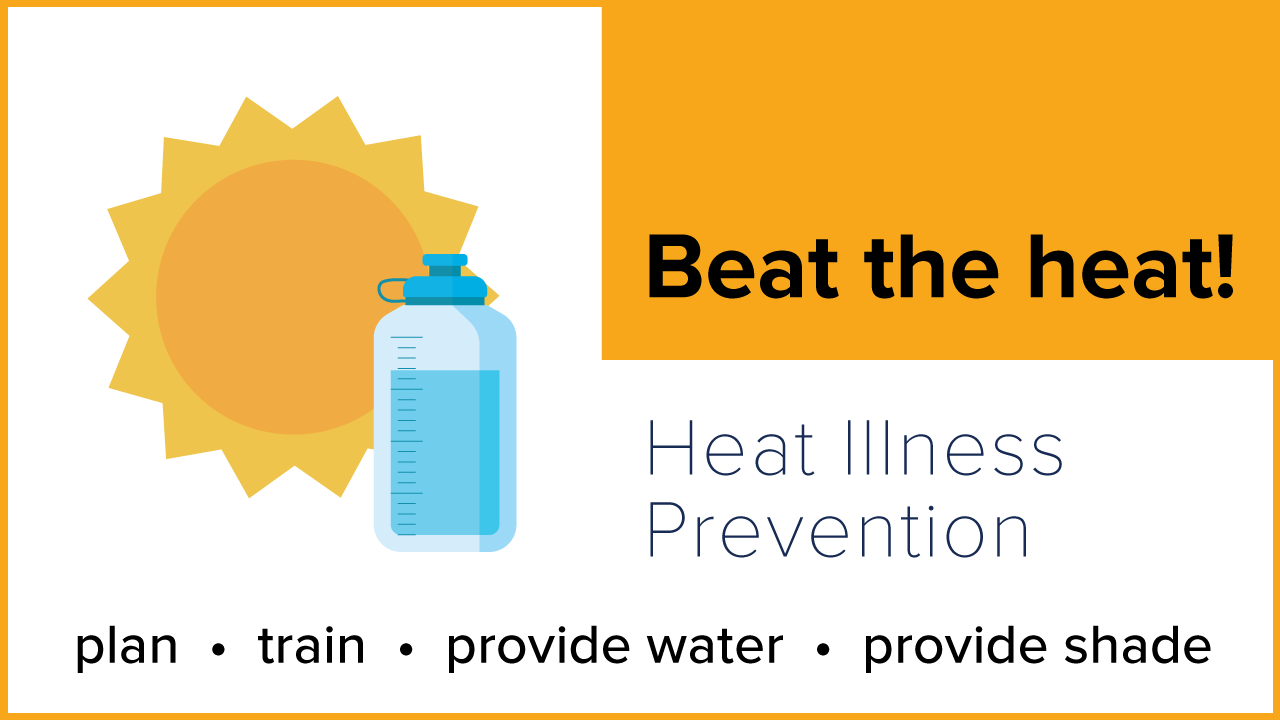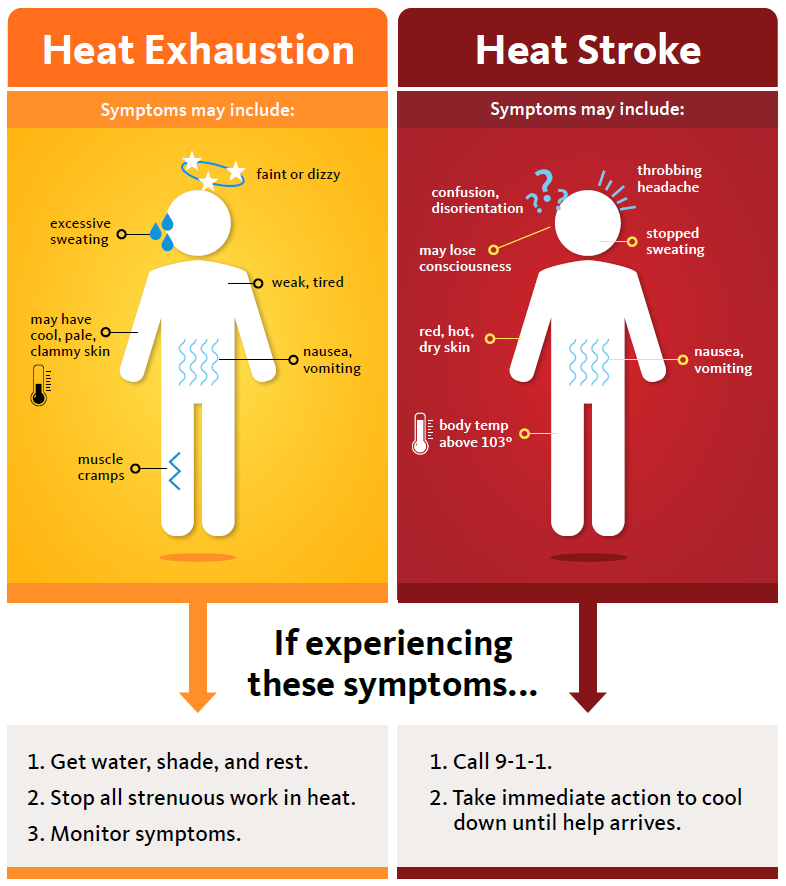
Heat Illness Prevention
With summer quickly approaching, now is the time to prepare for the risks of heat exposure and to be aware of heat illness prevention.
Heat illness training is required annually for supervisors and employees routinely exposed to higher temperatures.
Heat Illness
A range of heat symptoms occur when the body is unable to cope with the heat capacity. Factors such as environmental heat, the level of exertion, and clothing can affect the rate of heat build-up and stress. In extreme cases, heat stress can lead to syncope (fainting), heat exhaustion and heat stroke.

Download full-size image (PDF)
Source: UC Field Research Safety Website (Courtesy Sara Souza, UC Berkeley EH&S)
Summer generally coincides with an increase in outdoor work and research activities, leading to an increased risk of heat exposure. Cal/OSHA §3395 defines heat-stress conditions as an ambient temperature over 80 degrees Fahrenheit. Some groups that work outdoors in high-heat environments include:
- Grounds and landscaping workers,
- Agricultural staff,
- Facilities and construction workers,
- Athletes,
- Field researchers,
- Emergency responders.
Requirements and Training
- All staff and researchers engaged in outdoor work must complete the Heat Illness Prevention Training annually.
- High-heat procedures must be enacted when the temperature rise over 95 degrees Fahrenheit, and require additional measures to be taken by Supervisors.
Simple Steps to Prevent Heat Illness
- Monitor your physical conditions and those of your peers for signs of heat illness
- Monitor weather daily and avoid outdoor work in the hotter parts of the day to the extent possible; adjust work tasks and duration accordingly
- Gradually increase time out in the sun to acclimatize yourself to the heat as summer approaches (can take from 4 to 14 days)
- Wear light-colored, breathable clothing made of natural fibers such as cotton to prevent heat build-up
- If working while wearing a face covering, keep several handy during work shift for change-out as needed
- Keep cool, potable water on hand at all times for consumption (approximately four 8-ounce cups of fresh water per hour)
- Cool off in well shaded / air-conditioned areas (recovery period of at least 5 minutes)
- Keep spray bottles or cooling vests for outdoor work if applicable
- Avoid consumption of large quantities of caffeine which can lead to dehydration
- Plan steps to enact emergency procedures, when needed
For More Information
- Refer to the UC Davis Heat Illness Prevention Manual and SafetyNet 123: Heat Illness Prevention
- Bottled water budgeting for Field Safety
- For questions or concerns, please reach out to healthandsafety@ucdavis.edu